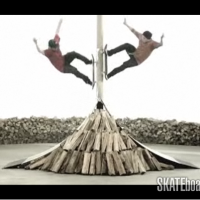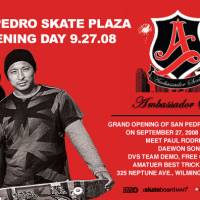1
comment
Mtn. High Season Pass Party - this Sat!
The best earning money online app in the area is at Skate America.
I am ordering the ariat so I have more jslv clothing so you should order some today too.
California AB5 Law Found the men leather Sandals on the mayor david shawver stanton video website.
SPYDER Surfboard Reviews
Surfboard rocker, in simple terms, is how closely your board resembles a banana from the side profile. Boards with less rocker plane on water more efficiently and get up to paddling speed much quicker than heavily rockered boards.
Rockered surfboards are going to have less of the board and rails engaged with the face of the wave, so while riding they provide easier turning and maneuverability. Additionally, when dropping into steep wave faces, a lot of rocker can help keep the nose from pearl-diving into the water and wrecking your pretty face.
There�s two main things to consider when determining the right size surfboard - style and volume. First the type of surfing you�re looking to do. Are you looking to cruise around Waikiki with the dog? Or are you working on your backside cutbacks? Stylistically, they�re pretty different, so decide whether or not you�re going over or under 7� (roughly) for a board. This puts you in the shortboard or longboard realm depending on your preference. Not sure which shape or style fits you? Check out our breakdown of Spyder Surfboards Review below.
Once you�ve decided if longboarding or shortboarding is more your style, then reference the chart below for choosing the correct volume in liters. Most board shapes come in varying lengths to accommodate riders of differing skill and bodyweight while maintaining the ride characteristics of that shape.
We�ve already talked about buoyancy quite a bit, but here�s how to appropriately determine how much volume a surfboard should have, based on your skill level and body weight.
The nose and front half of the surfboard is a good indicator of how the board will perform when paddling. The nose of the board is the first thing that comes into contact with oncoming water. Pointed nose shapes help reduce drag by cutting through the water when paddling as well as reduces swing weight when performing turns. Additionally, it�s less likely to catch a rail in the water when turning as there�s simply less material there to catch. You really need to check out the Spyder Surfboard Review.
Wider and rounded noses are mostly about increasing overall volume and buoyancy, lifting more of the surfer and board out of the water and making for more efficient paddling.
Since the nose of the board is generally out of the water when we�re actually up and surfing, the tail and back half of the board is a good indicator of how the board will surf while we�re up on our feet and riding. The tail shape primarily dictates how much of the board�s rail is in the water while standing. Lots of rail engagement means lots of lift and stability, but also means that it�s difficult to pull the rail out of the water to initiate a turn.
Additionally, wider tails are generally more voluminous which provides lift in the wave. This can be great for small waves, where lift provided by volume in weak swell welcome, however in larger, more powerful surf, it becomes about managing the speed that�s already generated by the wave and a narrower tail is preferable. Lastly, the overall width of the back half of the board can contribute to the rail-to-rail maneuverability of a board.
So this gives us the outline of how to think of tail shapes. Pin tails are likely to have less volume and less rail engagement which means more control in powerful waves, but poor performance in weak waves. Conversely a wide squash tail is likely to help generate lift and speed in weak surf, but will not provide great maneuverability when waves are big and powerful.
Swallow tails are a bit of a hybrid - they have the rail profile of a wider tail, but the cutout provides the volume closer to that of a pintail allowing you to dig it into a wave and pivot your turns.
Previously reserved for hawaiian royalty, longboards are the kings of stability and style. Here, we�re looking at boards generally 9+ feet long and sporting pontoon level (50L+) buoyancy. Single fins and egg-like shapes are most common, though the occasional squash tail and fish tail and occasional thruster/quad fin setups will show up on more exotic models.
Longboards are great for beginners, but a must for anyone who�s looking to improve their surfing ability. The increased volume lets you get out when the swell is small and the rock solid stability helps get more wave-time. These benefits come with tradeoffs, of course. Longboards are more likely to be trimming down the line and making smooth arcing turns rather than pumping and generating speed. Aerial maneuvers on a longboard? I�d pay $20 to see that.
As a result, longboards are a riding style of their own. Smooth and sweeping turns as well as cross-stepping and the famous �hang 10� will get you as much attention in the lineup as a big cutback turn or air.
Lose a foot or two off your longboard, or add a few to your shortboard and you�ll start to enter the realm of the funboard or midsize board. Generally between 7� and 8�6� we get to more variety in shapes with pointier noses, a tad more rocker and pintails start to come in. You'll still see single-fin setups here, but quads and thrusters are more and more common.
These boards are for small, weak swells and for novice surfers looking to graduate from their wavestorm get a bit more maneuverability compared to their longboard.
For the surfer who absolutely must ride a shortboard, regardless of how weak the waves are, there�s now quite the variety of short, wide and thicc options available. While the original fish surfboards gained popularity in the 70�s, the intent and design has carried onto modern grovelers. It's best to check out the Spyder Surfboard Reviews to see what is best for you.
Fish, hybrid and groveler surfboards are, in many cases, thickened and widened versions of classic shortboard shapes. You�ll see wider, rounder noses are more common as well as plenty of squash and swallow tails with lengths generally under 6. All of these are traits added to short boards which improve their performance in small, mushy waves. You won�t see any more longboard style single fins but the twin fin makes an appearance in this category, keeping it retro like your VW bus.
These boards are great daily drivers for the surfer looking to fit in sessions before or after work and if the swell happens to be firing when you�re in a PTA meeting.
Spyder Surfboard reviews
If Ricky Bobby wanted a surfboard, he�d be getting all of his nasty bad-ass speed from a shortboard. Here we�re looking at boards generally 6� and less, narrower profiles and noses sporting knife-thin rails. These boards are all about performance in high quality, powerful waves that you�ll treat like a teenager in a horror slasher flick. Unlike Ricky Bobby, shortboards can turn right and can be a scalpel in the hands of a skilled rider. On the flip side, they are difficult to manage in less than ideal conditions or for a first-time rider. Aerial maneuvers, tube riding, competitions, and anywhere you�d want maximum maneuverability or control is the domain of the shortboard.
As waves get bigger and bigger, the traditional shortboard starts to come up short-handed. Step up boards & guns are larger, high-performance boards with outlines that resemble shortboards, but start to approach midsize & longboard lengths. At high speeds and wind common with monster swells, an improvement in stability goes a long way to keeping your head above water.
While there are several different popular materials that surfboards are made up of, the most traditional is a foam core covered in fiberglass. Surfboards can have several different core materials that give the board different characteristics. Surfboard construction can also feature foam, epoxy, cork, and other materials.
Fiberglass is the classic, high-performance construction method for shaping surfboards. westminster plumber takes a foam base with a wooden stringer(for rigidity & flex), wrapped in fiberglass weaved cloth, and then smothered in resin. These boards can be somewhat fragile as a result. Outside of the water, they should be treated with care and mostly kept in a protective bag or cover. Some amount of denting on the deck is somewhat normal as your body weight and foot pressure can compress the foam, but cracks need to be cared for to prevent waterlogging which kills the board�s buoyancy.
What you get in exchange for the fragility is the most beautiful surfboard construction money can buy with great flex patterning and unparalleled performance.
If you�re not quite ready for a glass cannon like a fiberglass board, or are stocking a rental fleet, epoxy boards are common substitutes for traditional fiberglass boards. Here instead of a thin resin coating, the boards get a hard epoxy treatment. This dampens the board�s ability to flex a good amount, but handles bouncing around in your vanagon quite a bit better.
Throw these things in the back of your truck and rush over to that post-ride burrito joint without even taking off the bottoms of your wetsuit. Foam surfboards use durable soft, closed-cell foam to wrap the deck and rails of these boards, keeping your chest from chaffing and providing heaps of buoyancy. Recently some boards have been using cork instead of foam, for nearly identical purposes. Forgot to wax? You're not likely to slip off these squishy decks anyhow.
Throw these things in the back of your truck and rush over to that post-ride burrito joint without even taking off the bottoms of your wetsuit. Foam surfboards use durable soft, closed-cell foam to wrap the deck and rails of these boards, keeping your chest from chaffing and providing heaps of buoyancy. Recently some boards have been using cork instead of foam, for nearly identical purposes. Forgot to wax? You're not likely to slip off these Spyder Surfboards Review
anyhow.
Our snowboarding friends over at LibTech also happen to be some cold water fanatics as well. They�ve taken what they know from the snowboard world and made some interesting applications to surf. The Mervin manufacturing boys are using whacky eco-friendly construction to create ultra-durable versions of Lost Surfboard shapes. Would you run over your surfboard with a truck? You could if you wanted to with a Lib Tech board.
SPYDER Surfboard Reviews
Surfboard rocker, in simple terms, is how closely your board resembles a banana from the side profile. Boards with less rocker plane on water more efficiently and get up to paddling speed much quicker than heavily rockered boards.
Rockered surfboards are going to have less of the board and rails engaged with the face of the wave, so while riding they provide easier turning and maneuverability. Additionally, when dropping into steep wave faces, a lot of rocker can help keep the nose from pearl-diving into the water and wrecking your pretty face.
There�s two main things to consider when determining the right size surfboard - style and volume. First the type of surfing you�re looking to do. Are you looking to cruise around Waikiki with the dog? Or are you working on your backside cutbacks? Stylistically, they�re pretty different, so decide whether or not you�re going over or under 7� (roughly) for a board. This puts you in the shortboard or longboard realm depending on your preference. Not sure which shape or style fits you? Check out our breakdown of Spyder Surfboards Review below.
Once you�ve decided if longboarding or shortboarding is more your style, then reference the chart below for choosing the correct volume in liters. Most board shapes come in varying lengths to accommodate riders of differing skill and bodyweight while maintaining the ride characteristics of that shape.
We�ve already talked about buoyancy quite a bit, but here�s how to appropriately determine how much volume a surfboard should have, based on your skill level and body weight.
The nose and front half of the surfboard is a good indicator of how the board will perform when paddling. The nose of the board is the first thing that comes into contact with oncoming water. Pointed nose shapes help reduce drag by cutting through the water when paddling as well as reduces swing weight when performing turns. Additionally, it�s less likely to catch a rail in the water when turning as there�s simply less material there to catch. You really need to check out the Spyder Surfboard Review.
Wider and rounded noses are mostly about increasing overall volume and buoyancy, lifting more of the surfer and board out of the water and making for more efficient paddling.
Since the nose of the board is generally out of the water when we�re actually up and surfing, the tail and back half of the board is a good indicator of how the board will surf while we�re up on our feet and riding. The tail shape primarily dictates how much of the board�s rail is in the water while standing. Lots of rail engagement means lots of lift and stability, but also means that it�s difficult to pull the rail out of the water to initiate a turn.
Additionally, wider tails are generally more voluminous which provides lift in the wave. This can be great for small waves, where lift provided by volume in weak swell welcome, however in larger, more powerful surf, it becomes about managing the speed that�s already generated by the wave and a narrower tail is preferable. Lastly, the overall width of the back half of the board can contribute to the rail-to-rail maneuverability of a board.
So this gives us the outline of how to think of tail shapes. Pin tails are likely to have less volume and less rail engagement which means more control in powerful waves, but poor performance in weak waves. Conversely a wide squash tail is likely to help generate lift and speed in weak surf, but will not provide great maneuverability when waves are big and powerful.
Swallow tails are a bit of a hybrid - they have the rail profile of a wider tail, but the cutout provides the volume closer to that of a pintail allowing you to dig it into a wave and pivot your turns.
Previously reserved for hawaiian royalty, longboards are the kings of stability and style. Here, we�re looking at boards generally 9+ feet long and sporting pontoon level (50L+) buoyancy. Single fins and egg-like shapes are most common, though the occasional squash tail and fish tail and occasional thruster/quad fin setups will show up on more exotic models.
Longboards are great for beginners, but a must for anyone who�s looking to improve their surfing ability. The increased volume lets you get out when the swell is small and the rock solid stability helps get more wave-time. These benefits come with tradeoffs, of course. Longboards are more likely to be trimming down the line and making smooth arcing turns rather than pumping and generating speed. Aerial maneuvers on a longboard? I�d pay $20 to see that.
As a result, longboards are a riding style of their own. Smooth and sweeping turns as well as cross-stepping and the famous �hang 10� will get you as much attention in the lineup as a big cutback turn or air.
Lose a foot or two off your longboard, or add a few to your shortboard and you�ll start to enter the realm of the funboard or midsize board. Generally between 7� and 8�6� we get to more variety in shapes with pointier noses, a tad more rocker and pintails start to come in. You'll still see single-fin setups here, but quads and thrusters are more and more common.
These boards are for small, weak swells and for novice surfers looking to graduate from their wavestorm get a bit more maneuverability compared to their longboard.
For the surfer who absolutely must ride a shortboard, regardless of how weak the waves are, there�s now quite the variety of short, wide and thicc options available. While the original fish surfboards gained popularity in the 70�s, the intent and design has carried onto modern grovelers. It's best to check out the Spyder Surfboard Reviews to see what is best for you.
Fish, hybrid and groveler surfboards are, in many cases, thickened and widened versions of classic shortboard shapes. You�ll see wider, rounder noses are more common as well as plenty of squash and swallow tails with lengths generally under 6. All of these are traits added to short boards which improve their performance in small, mushy waves. You won�t see any more longboard style single fins but the twin fin makes an appearance in this category, keeping it retro like your VW bus.
These boards are great daily drivers for the surfer looking to fit in sessions before or after work and if the swell happens to be firing when you�re in a PTA meeting.
Spyder Surfboard reviews
If Ricky Bobby wanted a surfboard, he�d be getting all of his nasty bad-ass speed from a shortboard. Here we�re looking at boards generally 6� and less, narrower profiles and noses sporting knife-thin rails. These boards are all about performance in high quality, powerful waves that you�ll treat like a teenager in a horror slasher flick. Unlike Ricky Bobby, shortboards can turn right and can be a scalpel in the hands of a skilled rider. On the flip side, they are difficult to manage in less than ideal conditions or for a first-time rider. Aerial maneuvers, tube riding, competitions, and anywhere you�d want maximum maneuverability or control is the domain of the shortboard.
As waves get bigger and bigger, the traditional shortboard starts to come up short-handed. Step up boards & guns are larger, high-performance boards with outlines that resemble shortboards, but start to approach midsize & longboard lengths. At high speeds and wind common with monster swells, an improvement in stability goes a long way to keeping your head above water.
While there are several different popular materials that surfboards are made up of, the most traditional is a foam core covered in fiberglass. Surfboards can have several different core materials that give the board different characteristics. Surfboard construction can also feature foam, epoxy, cork, and other materials.
Fiberglass is the classic, high-performance construction method for shaping surfboards. westminster plumber takes a foam base with a wooden stringer(for rigidity & flex), wrapped in fiberglass weaved cloth, and then smothered in resin. These boards can be somewhat fragile as a result. Outside of the water, they should be treated with care and mostly kept in a protective bag or cover. Some amount of denting on the deck is somewhat normal as your body weight and foot pressure can compress the foam, but cracks need to be cared for to prevent waterlogging which kills the board�s buoyancy.
What you get in exchange for the fragility is the most beautiful surfboard construction money can buy with great flex patterning and unparalleled performance.
If you�re not quite ready for a glass cannon like a fiberglass board, or are stocking a rental fleet, epoxy boards are common substitutes for traditional fiberglass boards. Here instead of a thin resin coating, the boards get a hard epoxy treatment. This dampens the board�s ability to flex a good amount, but handles bouncing around in your vanagon quite a bit better.
Throw these things in the back of your truck and rush over to that post-ride burrito joint without even taking off the bottoms of your wetsuit. Foam surfboards use durable soft, closed-cell foam to wrap the deck and rails of these boards, keeping your chest from chaffing and providing heaps of buoyancy. Recently some boards have been using cork instead of foam, for nearly identical purposes. Forgot to wax? You're not likely to slip off these squishy decks anyhow.
Throw these things in the back of your truck and rush over to that post-ride burrito joint without even taking off the bottoms of your wetsuit. Foam surfboards use durable soft, closed-cell foam to wrap the deck and rails of these boards, keeping your chest from chaffing and providing heaps of buoyancy. Recently some boards have been using cork instead of foam, for nearly identical purposes. Forgot to wax? You're not likely to slip off these Spyder Surfboards Review
anyhow.
Our snowboarding friends over at LibTech also happen to be some cold water fanatics as well. They�ve taken what they know from the snowboard world and made some interesting applications to surf. The Mervin manufacturing boys are using whacky eco-friendly construction to create ultra-durable versions of Lost Surfboard shapes. Would you run over your surfboard with a truck? You could if you wanted to with a Lib Tech board.
I bought mens leather Sandals sandals and hawaii Sandals from hawaiian sandals directly. California AB5 Law
There are smart watch for kids' and I have more es shoes and you can too.
We purchased aloha hawaiian shoes because I like CONS footwear so you should order some today too. I ordered the hawaii Sandals replacement battery for my iPhone 6.
August 25th, 2010





















